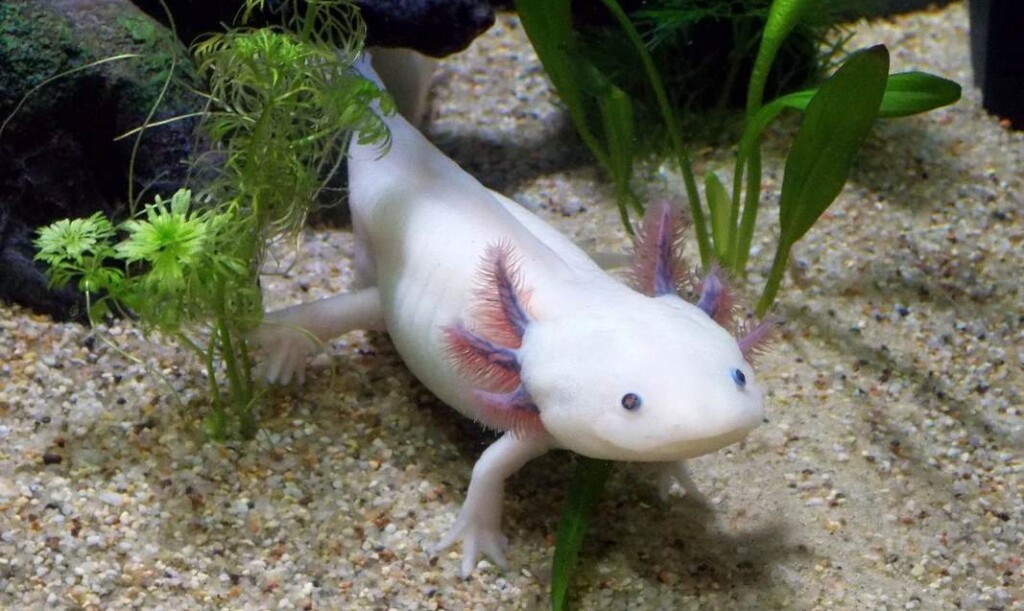 A captive-bred leucistic Axolotl – credit, LaDame Bucolique, via Pixabay
A captive-bred leucistic Axolotl – credit, LaDame Bucolique, via PixabayIn Mexico, a captive-breeding program for one of the world’s most endangered amphibians has successfully released 18 individuals into suitable habitat.
The scientists behind the project found that all 18 survived after being recaptured, and even gained weight and made friends with each other, offering hope that if enough habitat can be found, this wild and weird amphibian will take care of itself.
South America has many native and charismatic species who became endangered from poaching and habitat loss, but the axolotl suffered from a different history.
It was likely already endangered over 300 years ago, when the Spanish conquest of the Aztecs concluded and the lakes which underfed the area now called Mexico City were drained by the conquerors.
Those semi-underground lakes were the secret refuges of this bizarre salamander, which today is considered Critically-Endangered by the IUCN. That’s a slight exaggeration, though, because as one of the most fascinating species on Earth, the axolotl is found in aquariums around the world by the tens of thousands.
Like the octopus or platypus, there’s just nothing quite like the axolotl—perhaps why the Aztecs, who nonetheless ate them regularly, considered them the offspring of the fire god.
The axolotl displays a characteristic called “neoteny” in which the development of an organism from embryo to maturity is slowed and condensed, resulting in pedomorphism. They are also unusual among amphibians for reaching adulthood without any form of metamorphosis, such as in the case with frogs and toads.
Lastly, and perhaps most remarkably, the axolotl can regenerate any part of its body that it can lose without dying, and is the subject of scientific research to see if the ability could be harnessed for medicine.
But for Dr. Alejandra Ramos and Luis Zambrano, the scientists behind this recent reintroduction effort, the value is more intangible than future medicines: the axolotl is simply a Mexican symbol, an icon of the land and its heritage.
Dr. Ramos from the Autonomous University of Baja California told the BBC their trial produced an “amazing result”.
GOOD NEWS FROM MEXICO: No Alcohol, No Cover, No Judging: Inside Mexico City’s Free Dance Parties
“The amazing news is that they all survived, and not only that, but the ones that we recaptured had gained weight—so they’re hunting.”
The individuals were released into a mixture of artificially-created wetland, the remnant of historic Lake Xochimilco, and natural wetlands restored through a partnership with local farmers.
GOOD NEWS FOR AMPHIBIANS: Tiny ‘Frog Saunas’ Help Endangered Amphibians Fight off Fungal Disease
Mexico City is a megalopolis, and the murky waters of the five ancient and sacred spring-fed lakes where the axolotl live have a long road to recovery themselves. The scientists have showed though that if time is taken to provide even just a little help—they installed natural water filters in the artificial quarry wetland to clean the water—this little, perpetually-smiling fire god can continue on.
“If we can restore this [wetland] habitat and restore the axolotl’s population in a city of more than 20 million people,” Dr. Zambrano said BBC, “I feel that we have hope for humanity.”
SHARE This Great News In The Quest To Restore This Ancient Animal…
Source link

